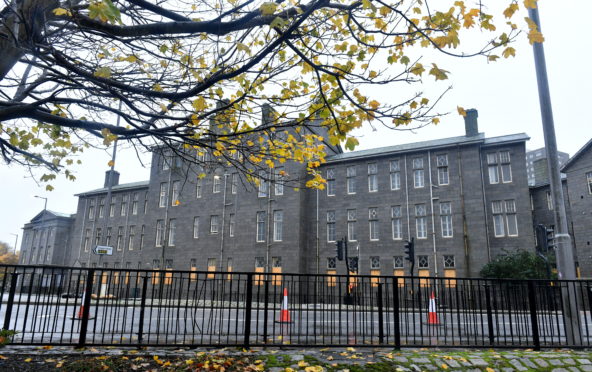Plans to turn one of Aberdeen’s oldest hospital buildings into flats have been abandoned.
Property investor Charlie Ferrari has withdrawn proposals to create serviced apartments at Woolmanhill Hospital.
The scheme, which came as part of a £10 million plan to revamp the site, had been approved by the council.
New proposals are understood to nearly be complete and are expected to be submitted “as soon as possible”.
His firm CAF Properties has already had plans for a 52-bedroom hotel approved for the historic site, which has four A-listed buildings.
The development is to become a new sister hotel to The Scotsman in Edinburgh.
The “boutique” hotel is planned for the Simpson Pavilion, which was designed by the city’s most famous architect Archibald Simpson.
Serviced apartments had been planned for the Stephen Pavilion, looking east towards John Street.
The developer has now informed Aberdeen City Council that he does not intend to build those flats.
Instead, Mr Ferrari said plans were being drawn up for another 40 hotel rooms.
The hospital, which was the original site of Aberdeen Royal Infirmary, closed in 2017 after nearly 270 years of operations.
Mr Ferrari revealed the downturn in the oil and gas industry and the economic turmoil caused by the pandemic had prompted the rethink.
Under the revised plans, the Stephen Pavilion would be connected to the Simpson Pavilion by a glazed ground floor corridor.
Mr Ferrari said: “With the extensive downturn in the oil industry, and now Covid-19, we decided to re-analyse the layouts of the Simpson and Stephen buildings – concluding that we should convert both buildings into hotel accommodation.
“We will retain as many of the internal partitions as possible to create circa 40 bedrooms in the Simpson building and 40 in the Stephen building.
“They would be linked on the ground floor by way of a glazed link corridor.
“These new plans are almost complete and will be submitted as soon as possible.”
Contractors took up work at the old hospital at the end of last year but were halted by lockdown.
The first phase of their work was to remove asbestos from all four buildings, as well as demolish old stair towers to the Stephen and Simpson Pavilions.
Construction was expected to take three years with operator G1 lined up to run it when it opens.
The firm, which also operates the Palm Court hotel in Seafield Road, has previously said it is confident the venture will be a success.
Earlier this month, Mr Ferrari pledged to ensure security at the heritage site after so-called urban explorers shared footage after sneaking inside.
The developer branded their actions as “illegal” and resolved to make sure the building was locked tight.
